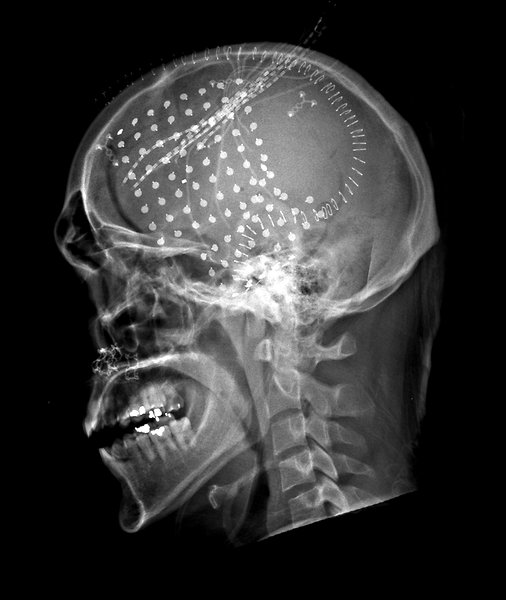The cyborg in us all
September 19, 2011 | Source: New York Times

Electrocorticographic (ECoG) implant (credit: Albany Medical College)
Gerwin Schalk studies Albany Medical Center patients who have become some of the world’s first cyborgs, with brain implants. Schalk transforms the brain signals emitted by their thoughts into software commands.
He is, in effect, designing a button that the mind could push. He dreams of letting people speak with their neurons, issuing silent commands to their machines. The project is part of a $6.3 million Army initiative to invent devices for telepathic communication — for instance, a “telepathy helmet” that would allow soldiers to beam thoughts to one another.
Justin Williams, a biomedical engineer at the University of Wisconsin, has transformed the ECoG implant into a microdevice. The implant would be about the size of a quarter and sit like a plug in the skull, with a tiny antenna for wireless hookup between machine and brain. The first to receive the implants would most likely be patients with spinal-cord injury, A.L.S., and motor disorders, especially epilepsy.
Dean Pomerleau, an engineer based at Carnegie Mellon University who leads Intel’s brain-computer initiative, might be one of the first to volunteer for a brain implant. He said that the miracle he is most eager to witness is a kind of mind-meld with other people: a “two-way direct-brain interface” that would “revolutionize human experience.”
Dartmouth College researchers are creating a NeuralPhone — an iPhone connected to an EEG (electroencephalography) headset.